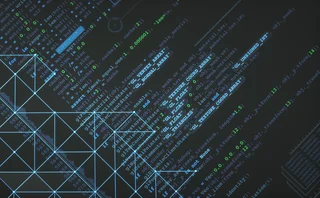October 2013: Proving the Worth of Marginal Gains

Anyone moderately interested in cycling has likely heard the term “marginal gains,” a catch-all phrase popularized by Sky Pro Cycling’s principal, David Brailsford. What he is driving at when he refers to marginal gains is the sports equivalent of the butterfly effect—a fascinating phenomenon I wrote about in my December 2012 editor’s letter.
While Brailsford was a competent cyclist during his mid-20s, spending time cutting his teeth in Belgium, it was only when he assumed control of the UK’s first ever Pro Tour squad that the true extent of his cycling and managerial expertise came to the fore. Brailsford’s fixation with mastering the variables under his control is hardly revolutionary—this approach has been at the core of all competent and successful coaching strategies since the origins of competitive sports—although he has taken it to an obsessive level, to the extent that even the smallest biomechanical, physiological and technological enhancements will be incorporated into his riders’ preparation, so long as they are legal, ethical and financial justifiable. And so, in addition to spending appreciable periods of time in wind tunnels fine-tuning positions, and lengthy training blocks in Tenerife incorporating the “live high, train low” principle as a way of legally optimizing riders’ hematocrit levels—the percentage of red blood cells to overall blood volume—team members now travel with their own duvets and pillows, mobile air-conditioning and ionization units, physiologists and sports psychologists, nutritionists, and chefs, to ensure that they are primed to do their jobs to the best of their abilities. And, consistent with the philosophy behind the butterfly effect, when these marginal gains accumulate, results can be influenced. After all, last Sunday’s elite men’s team time trial at the UCI Road Cycling Championships in Florence was won by the Belgian Omega Pharma Quickstep squad by less than a second from the Australian Orica Greenedge team—over a distance of 57 kilometers, a time difference of approximately 1/40th of 1 percent.
This obsession with marginal gains is relevant to today’s high-frequency trading (HFT) community, as firms do whatever is practical and financially feasible to minimize latency throughout their entire trading environment. And, in case you’re wondering whether the financial gain is worth the operational and infrastructural pain when it comes to eliminating latency, consider Spot Trading’s stance on the issue: “Latency is still very important—if I can get a one millisecond advantage, it’s probably still worth $100 million [per year],” explained Daniel Penley, trading system engineer at the Chicago-based HFT firm, when talking to Anthony Malakian for his feature, Zero Sum Game?, on page 30. One hundred million dollars per year—that’s proof enough for me.
Only users who have a paid subscription or are part of a corporate subscription are able to print or copy content.
To access these options, along with all other subscription benefits, please contact info@waterstechnology.com or view our subscription options here: https://subscriptions.waterstechnology.com/subscribe
You are currently unable to print this content. Please contact info@waterstechnology.com to find out more.
You are currently unable to copy this content. Please contact info@waterstechnology.com to find out more.
Copyright Infopro Digital Limited. All rights reserved.
As outlined in our terms and conditions, https://www.infopro-digital.com/terms-and-conditions/subscriptions/ (point 2.4), printing is limited to a single copy.
If you would like to purchase additional rights please email info@waterstechnology.com
Copyright Infopro Digital Limited. All rights reserved.
You may share this content using our article tools. As outlined in our terms and conditions, https://www.infopro-digital.com/terms-and-conditions/subscriptions/ (clause 2.4), an Authorised User may only make one copy of the materials for their own personal use. You must also comply with the restrictions in clause 2.5.
If you would like to purchase additional rights please email info@waterstechnology.com
More on Trading Tech
Will overnight trading in equity markets expand next year? It’s complicated.
The potential for expanded overnight trading in US equity markets sparked debate this year, whether people liked it or not.
WatersTechnology latest edition
Check out our latest edition, plus more than 13 years of our best content.
The total portfolio approach gains momentum: Building the right tech foundation for success
The rationale for the TPA, and the crucial role technology plays in enabling such an approach
Google, CME say they’ve proved cloud can support HFT—now what?
After demonstrating in September that ultra-low-latency trading can be facilitated in the cloud, the exchange and tech giant are hoping to see barriers to entry come down.
Institutional priorities in multi-asset investing
Private markets, broader exposures and the race for integration
BlackRock and AccessFintech partner, LSEG collabs with OpenAI, Apex launches Pisces service, and more
The Waters Cooler: CJC launches MDC service, Centreon secures Sixth Street investment, UK bond CT update, and more in this week’s news roundup.
TCB Data-Broadhead pairing highlights challenges of market data management
Waters Wrap: The vendors are hoping that blending TCB’s reporting infrastructure with Broadhead’s DLT-backed digital contract and auditing engine will be the cure for data rights management.
Robeco tests credit tool built in Bloomberg’s Python platform
This follows the asset manager’s participation in Bloomberg’s Code Crunch hackathon in Singapore, alongside other firms including LGT Investment Bank and university students.








